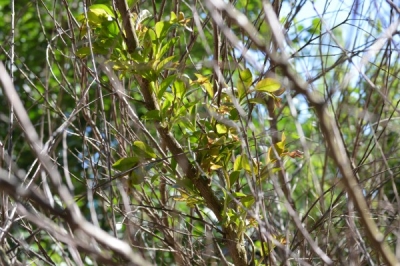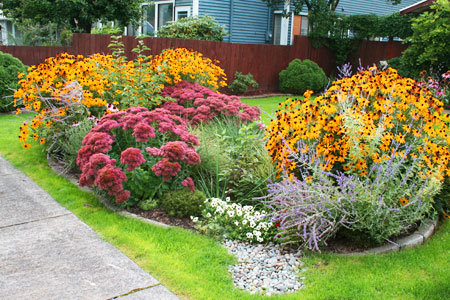My thumb nail gets a lot of work. There are few plants I can walk past without pinching. This goes double for annuals.
Pinching off the top encourages side branches to grow out and creates a fuller plant.
The science behind this is based on hormones. Removing the growing tip from a plant causes a chain reaction. In a normal situation, auxin travels from the top of the plant where it is produced downwards towards the roots. It suppresses the side growth of the buds. Pinching the growing tip removes the auxin allowing the side branches to grow out, creating a bushier plant.
Some plants benefit from a pinch more than others. Snapdragons, salvia, petunias, verbena, callibrachoa, anagalis, bidens, gaura, and lantana get pinched. In the perennials, dianthus, phlox, gaillardia, nepeta, leucanthemums, salvia and veronica all get a hard pinch.
Other plants are not helped by a pinch. Things that are naturally tall, like sunflowers, iresine, and psederanthemum do not respond well to a pinch. In this situation, a central leader is preferred.
There is a difference between removing dead flowers and pinching the growing green tip to create a bushier plant. Removing spent flowers will encourage a plant to keep blooming, instead of putting energy into seed production. Deadheading will do little to affect branching.
Pinching a plant back will delay flowering, but will increase total number of flowers by creating more blooming stems.
Which brings me to hanging basket and pot care. Baskets purchased for Mother’s Day may become sprawly in the summer, or out of balance. Cutting back leggy members creates a fuller plant and put a basket back into harmony.
Baskets and pots also benefit from a good shot of liquid fertilizer. If you see lower leaves beginning to look yellow, a good watering with your favorite liquid feed will do wonders. New growth steals nitrogen from older leaves, causing them to look yellow. Supplementing with a liquid feed will green them up again.
However, this is a situation where too much of a good thing can hurt, however. Too much fertility can burn roots, or cause extra vegetative growth at the expense of flowers.
Baskets could also need freshening up if cold season annuals like pansies or nemesia are looking peaked. Hot-weather-lovers like pentas, lantana, evolvulus or petunias would be happy to take their place.
Cutting back spring-blooming perennials now is also good for their health. If you have mountain pink, dianthus or candytuft with unattractive seed heads sticking up, a good shearing will promote a fuller plant. In my garden the catmint has been blooming for about a month and is starting to open up in the middle. I’ll cut it back in half. This will make it bushier and bring on another set of blooms in about three weeks. Cutting back summer bloomers like plox, agastache, or monarda that have gotten too large will help them bush out.
Now is also the time to cut back asters and mums to about a foot. Have it done by the fourth of July and you won’t lose the fall bloom.
 I think we can all agree it was a terrible winter and we are happy that spring is finally here. We can also agree that most of the butterfly bushes, hydrangeas, figs, crape myrtles, flowering cherries etc took a beating. Not to mention evergreens. That is a topic for another week.
I think we can all agree it was a terrible winter and we are happy that spring is finally here. We can also agree that most of the butterfly bushes, hydrangeas, figs, crape myrtles, flowering cherries etc took a beating. Not to mention evergreens. That is a topic for another week. set last fall. If there is only green from the bottom, you may have lost this year’s flowers. The reblooming types will still reward you with flowers on this season’s growth.
set last fall. If there is only green from the bottom, you may have lost this year’s flowers. The reblooming types will still reward you with flowers on this season’s growth. After last week’s torrential downpour, I’d thought I’d touch on the topic of rain gardens. Rain gardens have been gaining in popularity for the last several years as people are becoming more concerned with the sustainability of their gardens and lifestyles. Especially as protecting waterways and the Chesapeake Bay come to the forefront politically and environmentally.
After last week’s torrential downpour, I’d thought I’d touch on the topic of rain gardens. Rain gardens have been gaining in popularity for the last several years as people are becoming more concerned with the sustainability of their gardens and lifestyles. Especially as protecting waterways and the Chesapeake Bay come to the forefront politically and environmentally.